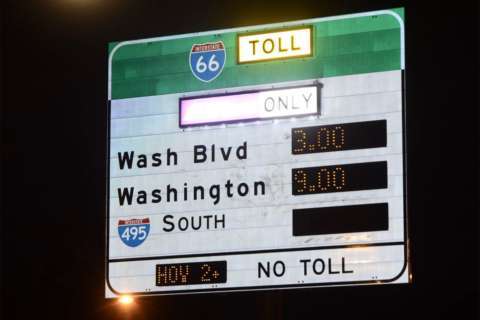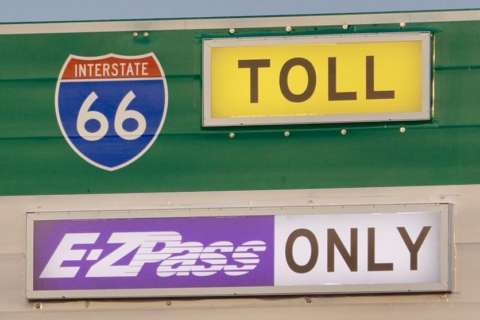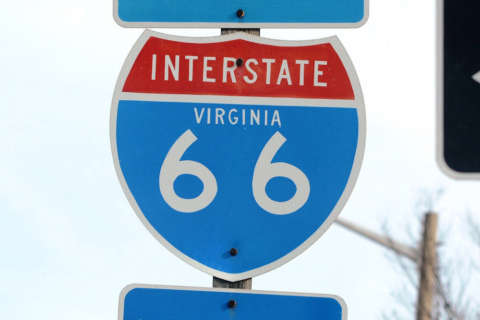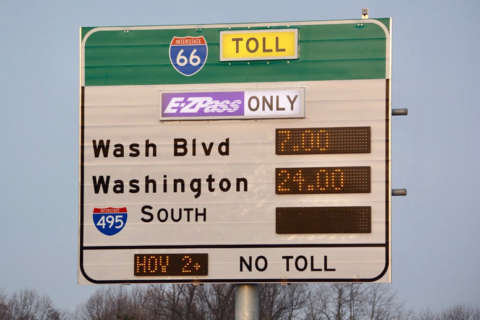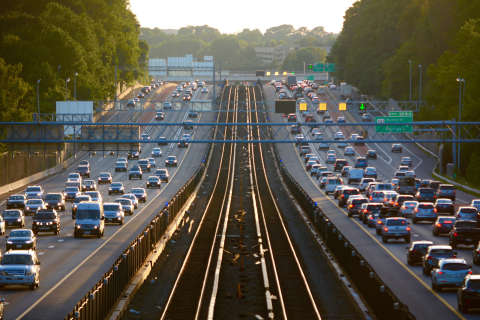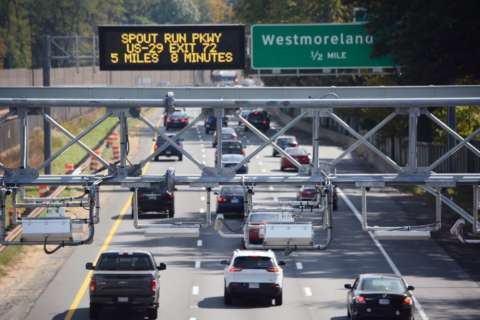WASHINGTON — About two years ago, during the last big debate over Interstate 66 rush-hour tolls for solo drivers, there was a lot of talk about $17 round-trip tolls. Virginia’s transportation secretary said this week that the tolls drivers have seen inside the Beltway so far remain in line with those projections.
New data the Virginia Department of Transportation provided Thursday from the first day of tolls on Monday morning show the average morning toll for drivers who paid with an E-ZPass, or who will get automated violation notices in the mail, was $10.70, while the average afternoon toll paid was $3.80 on day one. A VDOT news release highlighted the average of a “$14.50 round-trip” as a counterpoint to those complaining about the high posted prices at the busiest times of rush hour.
In the morning rush hour Monday (5:30-9:30 a.m.), VDOT says, about one-third of vehicles paid less than $10 to use the road, while 38 percent of drivers rode free with an E-ZPass Flex switched to HOV mode to indicate that there was at least one other person in the car. That would leave about 28 percent, or 3,700 drivers, who paid more than $10 Monday morning.
When the $17 toll estimates were being discussed, Virginia transportation leaders bounced back and forth at times between describing the projected $9 tolls eastbound in the morning and $8 tolls westbound in the afternoon as the high-end of likely prices paid, or as the average price that drivers who chose to pay a toll would pay, given that many do not use the entire stretch of road between the Beltway and Rosslyn.
Eventually, they ended up describing the toll projections as the average price that would be paid by drivers, but the presentation to the Commonwealth Transportation Board as it approved the projects in December 2015 predicted the average toll paid would be around $6.
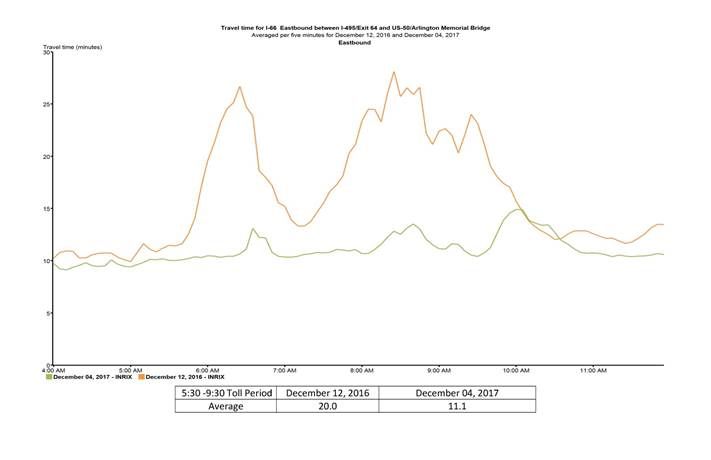
“I remember those as being the average toll to be used,” Aubrey Layne said Tuesday. “I don’t remember them as the maximum toll … dynamic pricing is driven by how people use the road.”
Layne pushed back on claims that the McAuliffe administration, or the preceding administrations which put the project in motion, had promised a cap on tolls.
“I don’t believe that’s an accurate statement, that people were misled. I am sure there’ll be some political people that will say whatever, but … We’ve made it clear: estimates, we wouldn’t know until it was actually done, and the models that we were looking at are pretty close to what we’re seeing today,” Layne said.
VDOT has declined to provide the overall average toll prices paid beyond Monday’s commutes so far, but said some drivers have paid as little as 50 cents to travel one of the four tolling segments. The highest posted toll so far for the entire stretch between the Beltway and Rosslyn was $40 for one six-minute period Tuesday, but the department could not say whether anyone actually paid that price. A VDOT spokeswoman said it takes several days to process the data on average tolls and pricing.
VDOT said 39 vehicles paid the highest posted toll on Monday of $34.50, out of 13,473 vehicles that used some part of I-66 eastbound inside the Beltway during the morning rush. 5,082 vehicles had an E-ZPass Flex set to HOV mode to indicate that there were at least two people in the car and get a free ride.
In the afternoon rush Monday, 16,307 vehicles used the westbound stretch of I-66 between Rosslyn and the Beltway; 4,964 of those had an E-ZPass Flex in HOV mode.
In a release, VDOT said there is no evidence of additional delays Monday during either rush hour on Monday due to spillover traffic onto Route 50, Route 29 or Route 7, but the agency acknowledges the roads have faced other issues this week due to crashes or Beltway backups. VDOT also said traffic on I-66 is moving faster and more consistently this week than during the shorter rush hour periods a year ago.
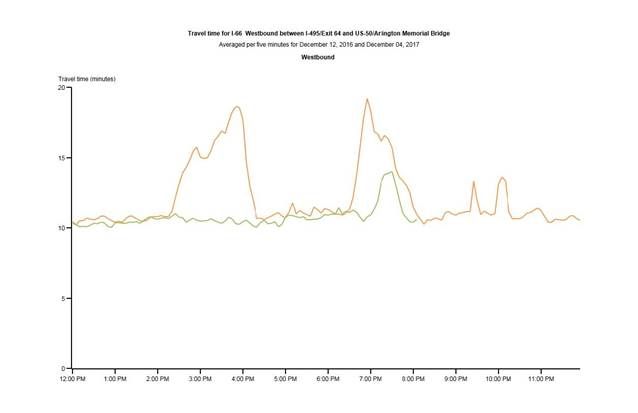
One group that Layne acknowledged faces changes under the new tolling and HOV rules through no fault of its own is solo drivers who used to ride during hours that fell outside the old HOV hours. The hours expanded Monday from two and a half to four hours each way.
“I would say that’s the one group that really has been a change, but you know what? The whole algorithm is based on making sure everything works together. If we wouldn’t have had expanded hours, that would have meant the tolls would have been even higher during the periods in which they were given,” Layne said.
The changes also eliminated exemptions to the HOV rules for traffic to and from Dulles Airport, and for certain drivers of older hybrid vehicles.
“The tolls are market-driven, and we’ve always said they’re going to be how people use them. There’s going to be a point where somebody says ‘It’s not worth it to do that,’ and, quite frankly, if you don’t want to pay it, it’s pretty simple: Put somebody else in your car,” Layne said.
Drivers who do meet the HOV requirements need an E-ZPass Flex transponder flipped to HOV mode in order to get the free ride toward Rosslyn from 5:30 a.m. to 9:30 a.m. or toward the Beltway from 3 p.m. to 7 p.m.
Layne is satisfied with how the tolls are helping to manage traffic.
“No Carmageddon; everything’s moving … that means buses and transit are now on schedule. None of this impact to the side roads — I know everybody’s got their own anecdotal perception, but we’re tracking that,” Layne said. “From a traffic perspective, the algorithm looks like it is correct.”
VDOT is working to widen eastbound I-66 by fall 2020 between the Dulles Connector Road and Ballston. Construction work is due to begin in the next few months on the $85.7 million contract; the work will also widen bridges and ramps and add noise barriers.

